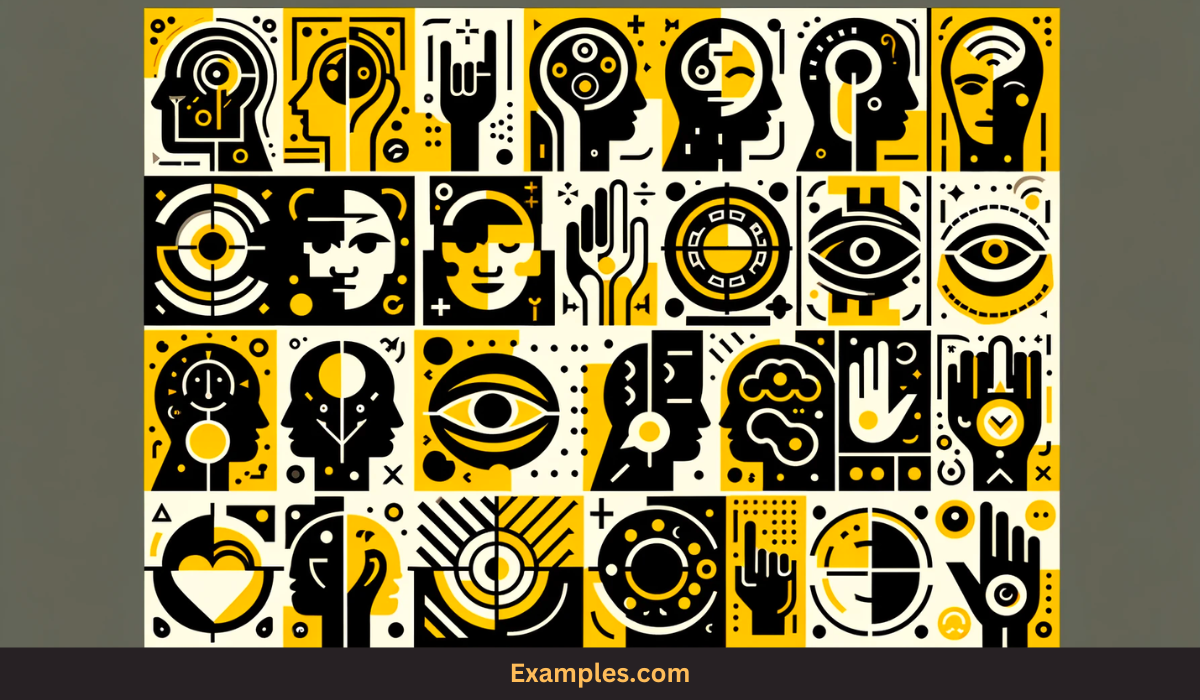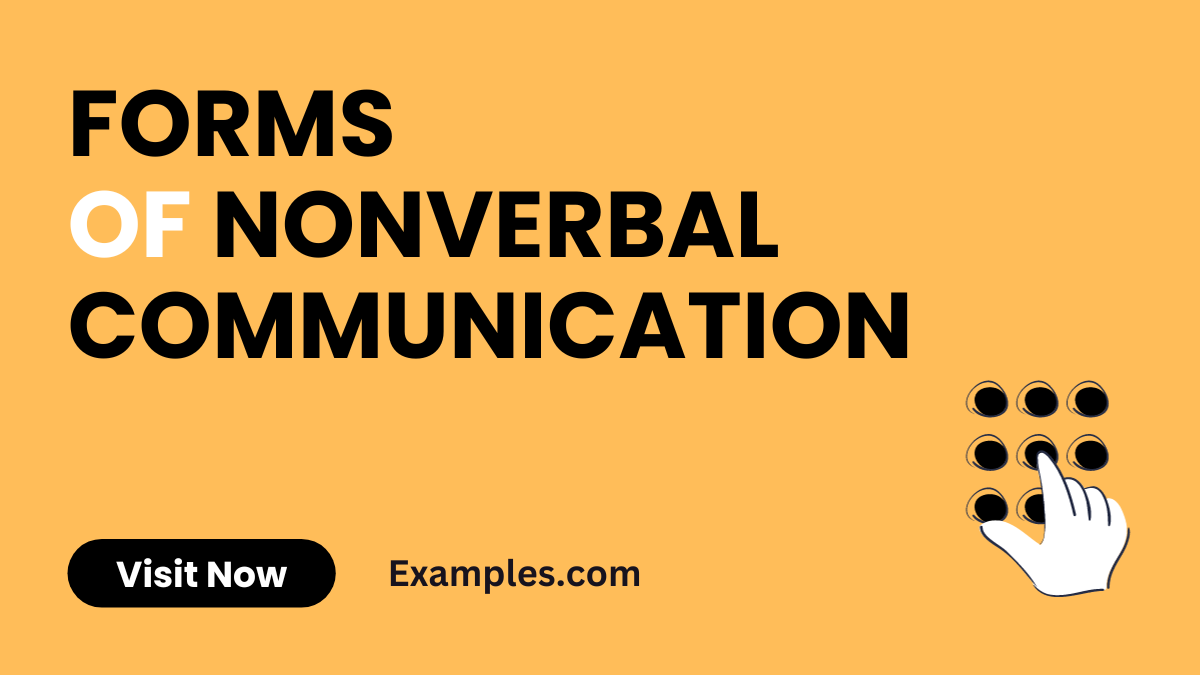10 Forms of Nonverbal Communication Examples
Embark on an insightful exploration of Forms of Nonverbal Communication. This detailed guide delves into the subtleties of unspoken interactions, highlighting how gestures, facial expressions, and body language silently shape our communications. With practical nonverbal communication examples, you’ll gain a richer understanding of this vital aspect of interaction, essential for anyone looking to enhance their personal and professional communication skills. Let this guide be your gateway to the nuanced world of nonverbal cues.
What are the Forms of Nonverbal Communication?
Nonverbal communication encompasses the various ways we express ourselves without spoken words. It’s a key component of our daily interactions, often conveying more than verbal communication alone. This silent form of communication includes facial expressions, body language, gestures, and eye contact, each playing a pivotal role in nonverbal communication examples. Unlike verbal communication, which depends on words, nonverbal communication hinges on how messages are presented. By understanding these forms, we gain insight into the full spectrum of human communication, enhancing our ability to connect and convey our intentions effectively.
Effective Forms of Nonverbal Communication

Nonverbal communication is a key component of interaction, often conveying more than words alone. The effective forms of nonverbal communication encompass a variety of behaviors and signals that enhance understanding and build relationships. Here, we explore some of these effective forms, emphasizing their role in conveying clear and impactful messages.
Facial Expressions
Facial expressions are universally recognized as powerful conveyors of emotions. A smile, frown, or raised eyebrows can communicate happiness, displeasure, or surprise, respectively. These expressions often accompany verbal communication, providing a clearer picture of the speaker’s feelings and attitudes. Understanding and accurately interpreting facial expressions can significantly improve interpersonal communications.
Body Language
Body language includes gestures, postures, and movements, each carrying specific meanings. Open body postures, such as uncrossed arms or leaning forward, typically indicate interest and engagement, while closed postures may suggest disinterest or discomfort. Effective use of body language can enhance the clarity and effectiveness of a message, making it an essential aspect of nonverbal communication.
Eye Contact
Maintaining appropriate eye contact is a critical aspect of nonverbal communication. It signifies attention and interest and can also establish trust and credibility. However, the level of acceptable eye contact varies across cultures; hence, understanding cultural nuances is important for effective communication.
Touch
Touch, or haptics, is another significant form of nonverbal communication. A handshake, pat on the back, or a comforting touch can convey a range of emotions from support and appreciation to sympathy. However, it’s essential to be aware of personal and cultural boundaries when using touch as a form of communication.
Important Forms of Nonverbal Communication
While all forms of nonverbal communication are influential, some play a more critical role in our daily interactions. These important forms of nonverbal communication help in forging deeper connections and understanding, especially in diverse settings.
Gestures
Gestures, such as nodding, waving, or pointing, can accompany speech to add emphasis or provide clarity. Gestures vary widely across cultures, so understanding their appropriate use and interpretation is crucial in avoiding miscommunication, especially in multicultural environments.
Space and Proximity
Proxemics, or the use of space in communication, influences how we perceive relationships and interactions. Personal space preferences vary depending on cultural norms and individual comfort levels. Recognizing and respecting these space preferences is vital in establishing comfortable and respectful communication.
Paralanguage
Paralanguage refers to the vocal elements that accompany speech, such as tone, pitch, volume, and pace. These elements can drastically alter the message’s meaning, making them essential for conveying emotions and intentions accurately.
Physical Appearance and Artifacts
How we dress and present ourselves, along with the personal objects we use, often communicate aspects of our identity, status, and values. In professional settings, physical appearance can significantly impact first impressions and ongoing interactions.
By mastering these forms of nonverbal communication, individuals can enhance their ability to communicate effectively, build stronger relationships, and navigate social and professional environments with greater ease. Understanding and appropriately using these nonverbal cues are essential skills in today’s interconnected world, where communication extends beyond words.
Different Forms of Verbal and Nonverbal Communication
Understanding the distinction and interplay between verbal and nonverbal communication is crucial for effective interactions. While verbal communication relies on words to convey messages, nonverbal communication uses non-lexical means to express ideas and emotions.
Verbal Communication
Verbal communication is the use of words to convey a message. It includes both spoken and written forms and is the primary way we share information and ideas. The effectiveness of verbal communication depends not just on the words chosen, but also on the way they are delivered.
Nonverbal Communication
Nonverbal communication complements, contradicts, or enhances verbal communication. It includes a range of methods like facial expressions, body language, gestures, eye contact, touch, proxemics, and paralanguage. Nonverbal cues often convey more about a person’s feelings and attitudes than words alone.
The Interplay
The interplay between verbal and nonverbal communication is complex. Nonverbal cues can complement verbal messages, emphasize points, or convey messages on their own. They can also contradict verbal messages, revealing hidden emotions or attitudes. Understanding this interplay is key to interpreting messages accurately and expressing oneself effectively.
In conclusion, mastering both forms of communication is essential in today’s diverse and interconnected world. Recognizing and effectively using these various forms of communication can enhance personal and professional interactions, leading to more successful and meaningful relationships.
In conclusion, understanding and mastering the forms of nonverbal communication is crucial for effective interpersonal interactions. By recognizing and appropriately utilizing facial expressions, body language, gestures, and other nonverbal cues, we can enhance our communication skills. This guide offers insightful tips to navigate the complex world of nonverbal communication, leading to more meaningful and successful connections.



